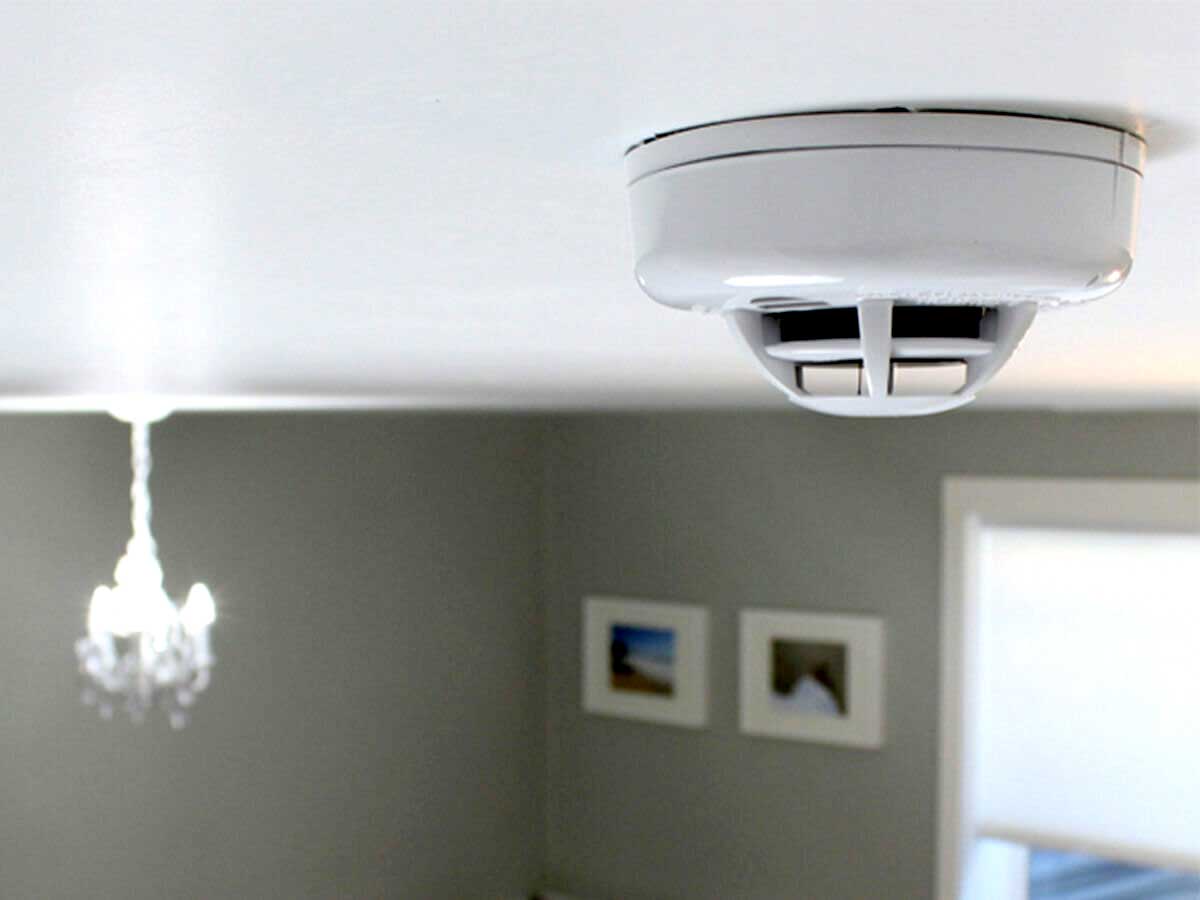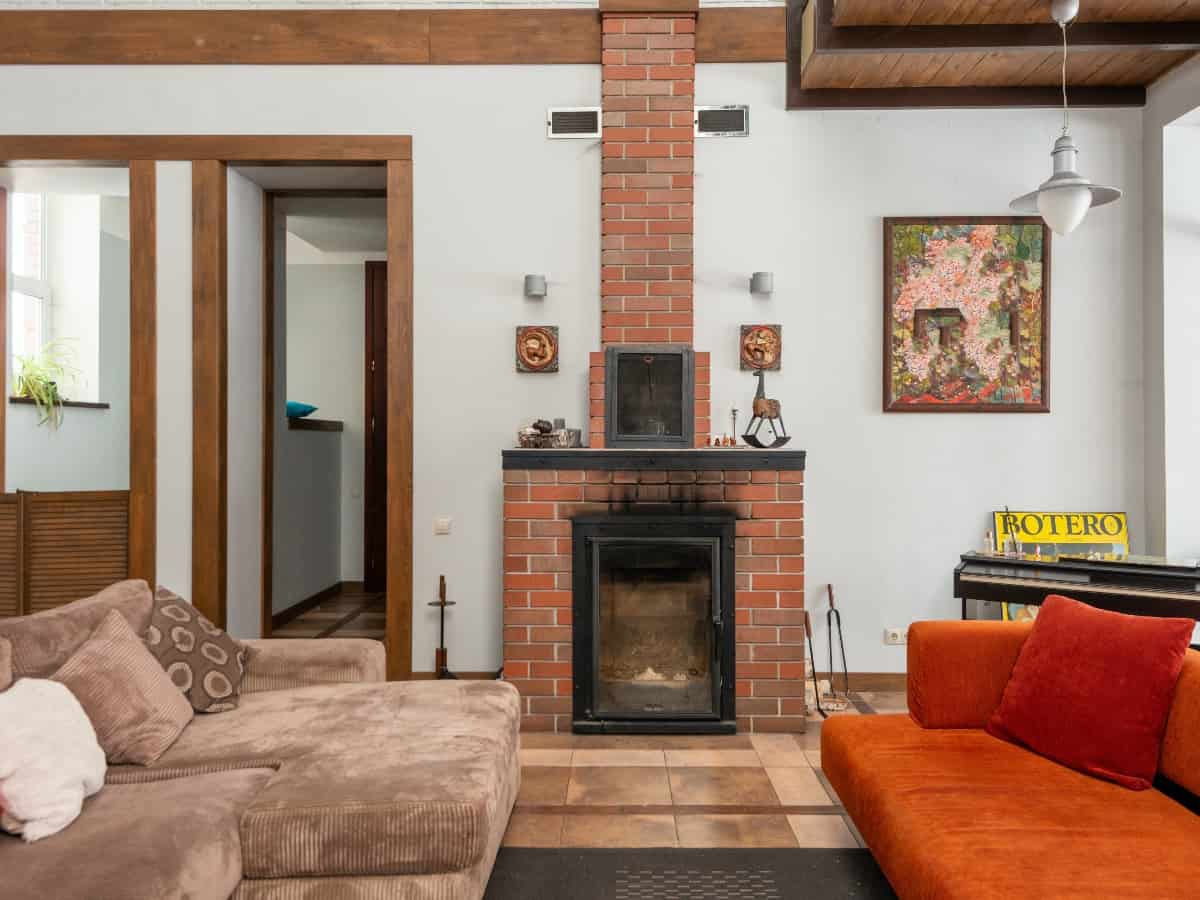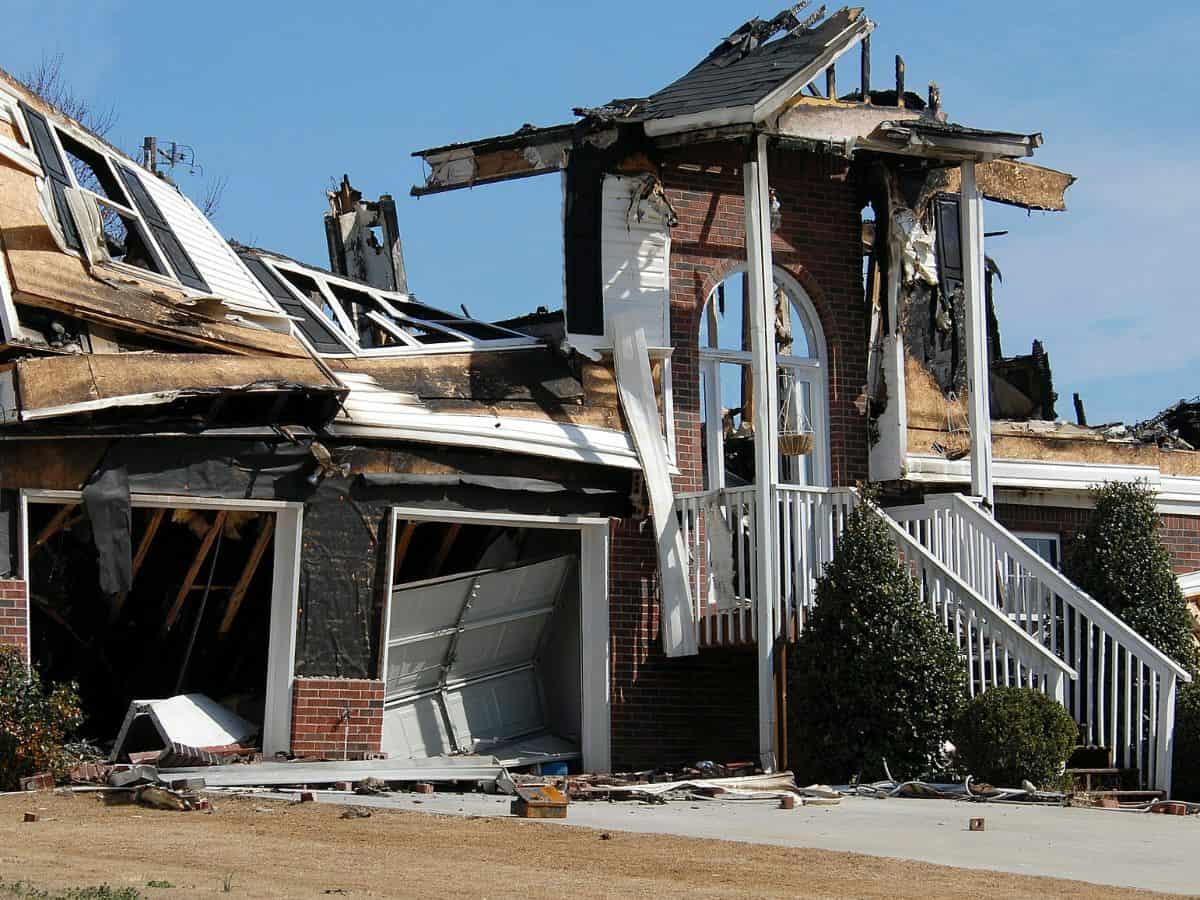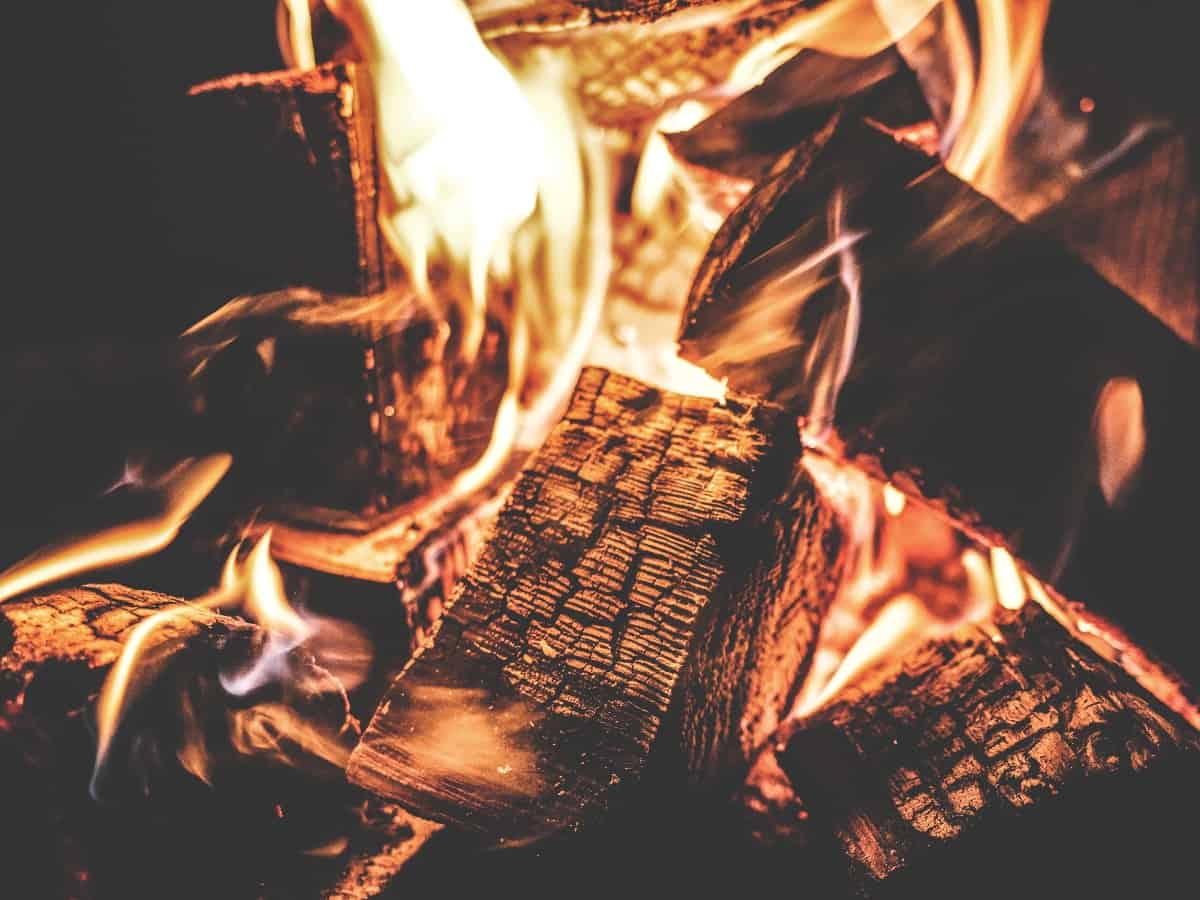A fireplace is a perfect way to add a touch of cozy comfort to your home. But, like any household investment, fireplaces need proper care if they’re to function properly. Fortunately, this usually takes just a few basic fireplace safety tips like the following:
- Using a smart smoke detector.
- Cleaning out ashes regularly.
- Always use safety screens.
- Never leave a fire unattended.
- Keeping a fire extinguisher close by.
- Have a home evacuation plan just in case.
Let’s look at these fireplace safety guidelines in more detail.

What Is a Smart Smoke Detector?
Smoke detectors are essential for every home. But legacy designs have serious weaknesses, such as limited battery life and the inability to detect carbon monoxide.
Today’s smart smoke detectors avoid these problems by offering cutting-edge features like these:
- Combined smoke/carbon monoxide detection. Protecting you and your loved ones from two threats at the same time.
- Cellular connection. So you can receive alerts and control the detector from your smartphone.
- Integration with popular home automation apps. Including Alexa, Google Home, and Apple HomeKit.
- Have direct communication with your local fire department. It alerts emergency responders to flames inside your home, even when nobody is there.
- Low battery alerts are sent directly to your phone. The alerts free you from the annoying chirping sound associated with old-school smoke detectors.
Another advantage of a smart smoke detector is the ability to integrate it with your home security system, providing a true turnkey approach to family safety. In some cases, a smart detector may even qualify you for discounts on your home insurance. Contact your agent or insurance company for more information.
Why It’s Important to Remove Fireplace Ashes
Ash in your fireplace can help the wood to burn better and give the fire itself added charm. But it can also cause serious safety risks when left in place for too long. Here’s why:
- Ash is extremely acidic. It can cause the metal parts of your fireplace to corrode and weaken, increasing the risk of safety problems.
- Excessive ash can smother the fireplace flames. This could force you to use more wood and take a bite out of your budget.
- Ash is a valuable resource when used outside of a fireplace. It’s great for composting, adding nutrients to your lawn, or correcting problems with chemically imbalanced soil.
Most experts recommend keeping the ash in your fireplace to a maximum depth of 2 inches during the winter and removing it entirely once spring comes along. Sweep it into an ash bucket and take it outside for disposal or use in your lawn or garden. Make sure it’s completely cool before touching it.

Why Safety Screens are Essential for Fireplace Safety
Fireplace safety screens serve three important roles:
1. They prevent stray sparks from spreading into the home itself and potentially causing a house fire.
2. They form a physical barrier between the fire and family members or pets. Almost 50,000 Americans end up in the emergency room every year due to burn accidents. As with so many safety risks, the best cure for this problem is prevention.
3. They make the fireplace more attractive. This can be a major benefit during the warm season when the aesthetic appeal is the primary advantage of your fireplace.
Fireplace safety screens are available in a wide variety of styles to match your specific needs and taste. Some of the most popular examples include:
- Single panel screens. This is the simplest type of screen available on today’s market. It has built-in legs and handles so you can move the screen as needed to add wood to the fire.
- Screens with doors. Once installed, using this type of screen is amazingly easy. Simply swing the door open to add more wood or to remove ash. They provide a very elegant appearance and are extremely popular among homeowners.
- Child and pet-proof designs. This type of screen extends well beyond the fireplace, creating sort of a bow shape. It provides an added buffer zone between the flames and members of your family.
- Summertime screens. These are designed to complement the appearance of your fireplace during the warm months. Often they have built-in candleholders for a touch of practicality and elegance.
The Risks of Leaving Your Fireplace Unattended
Occasionally, you may find yourself tempted to leave your fireplace burning while you exit the room to focus on other tasks. This is never a good idea, however. Here’s why:
- It only takes one stray spark to cause a house fire. Fireplace screens can minimize this risk. But they will never eliminate it. It’s up to you to keep an eye on the flames.
- Open flames can increase the amount of carbon monoxide in your home – – you should never rely solely on a carbon monoxide detector to protect you from this hazard. Instead, stay in the room with the fireplace and enjoy its ambiance while remaining attentive.
- The fireplace is a poor choice for primary heating – – it may seem cozy to drift off to sleep while the flames keep you warm. In reality, you’re more likely to wake up in the middle of the night with a dread fire and frostbite nipping at your nose. Use an airtight woodstove or modern HVAC system to keep your home warm and use your fireplace for a charming atmosphere.
The All-Important Fire Extinguisher
A fire extinguisher is one of the most essential items you can have in your home. To provide full protection for yourself and your family, you should know what type to purchase and how to use it. Here are some tips with that in mind:
- Look for an ABC-rated fire extinguisher. this design uses a carbon dioxide-based material to starve the fire of oxygen. It’s useful for most types of fires, including ones that start from wood.
- Check the pressure gauge from time to time – – this will tell you if the extinguisher is fully pressurized or needs replacing. You should also check the expiration date on the canister.
- Always store your fire extinguishers in a prominent place – – you should never hide them in closets or utility cabinets. Otherwise, you may forget where they’re located just when you need them the most.
- If you have small children in your home, then teach them to stay away from the extinguisher – – using fire extinguishers is an adult-only responsibility.
The PASS Method for Using Your Fire Extinguisher
Using your fire extinguisher properly is easy when you remember the PASS four-step method. Here’s how it works:
- Begin by pulling the pin from the extinguisher head, then discard it immediately.
- Aim the nozzle at the base of the fire, but never at the flames themselves.
- Squeeze the handle. This is located at the top of the canister.
- Sweep the nozzle back and forth along the fire’s base. Do this quickly and carefully. Keep in mind that the average home fire extinguisher empties itself in about eight seconds.

Why Every Home Should Have a Fire Evacuation Plan
Every household should have a fire escape plan. Here are some tips for creating yours:
- Create a map of the home and refer to it when outlining your plan.
- Choose two exit points from the home. One will serve as a backup location in case the first is blocked by fire.
- Practice your escape plan at least twice a year. Make sure to involve the whole family in this activity.
- Choose a prearranged spot for everyone to meet once they’re outside. Ensure that this is well away from the home’s perimeter.
- Remember that stairs can become engulfed in flames! That’s why it’s a good idea to have a high-capacity fire extinguisher near the top of the steps if you live in a multistory home or building.


